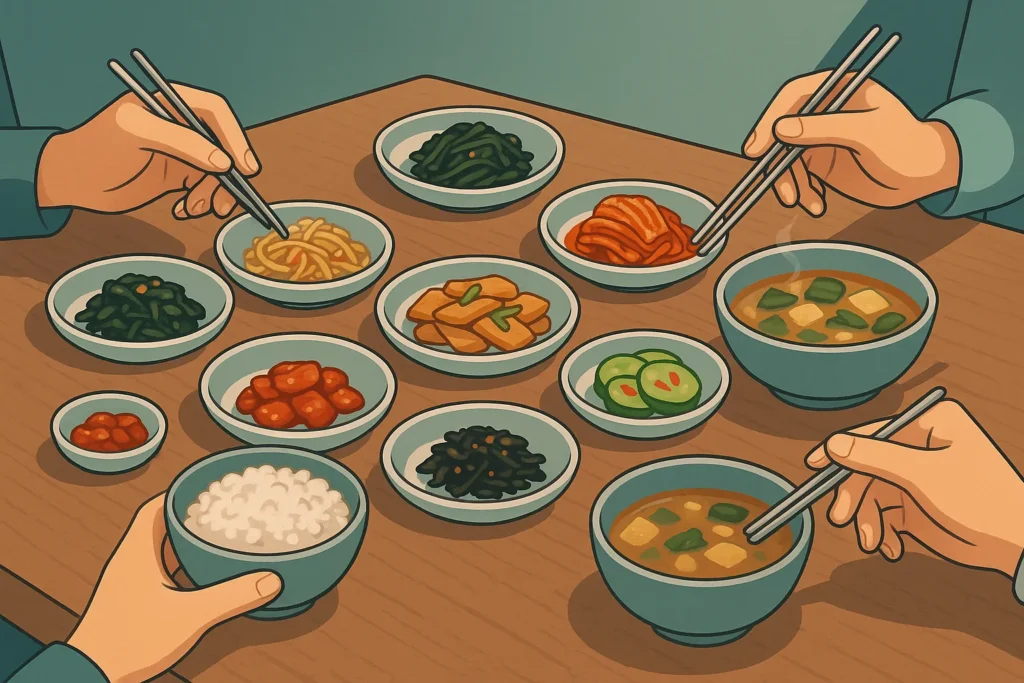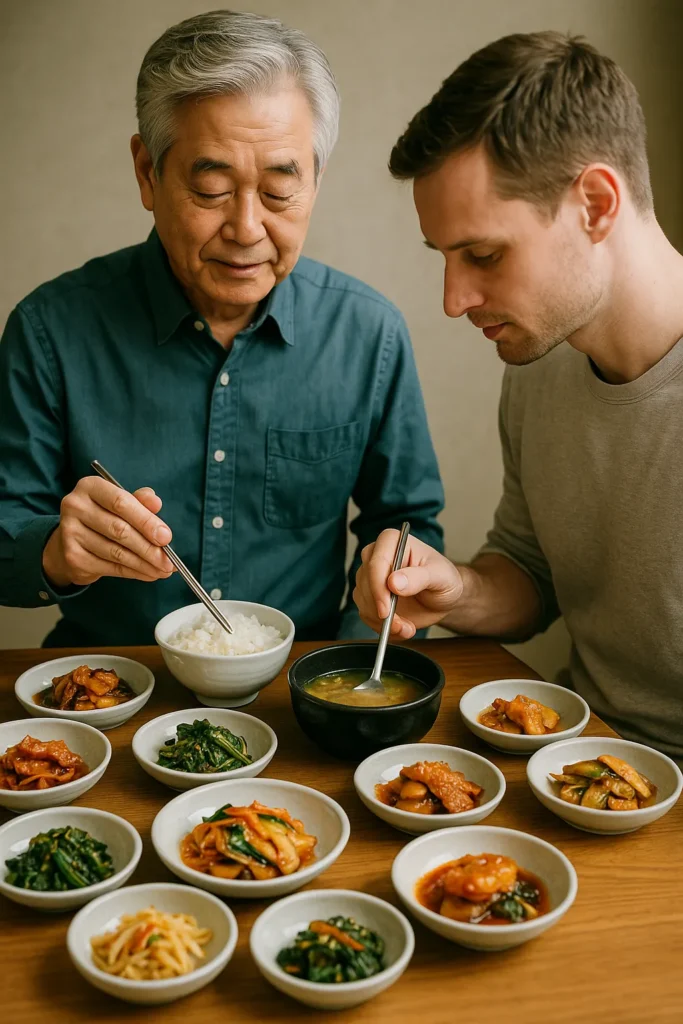Have you ever felt a little awkward when sitting down for a big Korean meal, wondering which utensil to use or if you’re holding your rice bowl correctly? Trust me, I’ve been there! Korean dining culture is all about respect and community, and getting the etiquette right isn’t just about manners—it’s about fully immersing yourself in the experience. So, let’s break down the basic dining etiquette tips every foreigner needs to know before they say “Jal-mukkes-seub-nida” (잘 먹겠습니다)! 😊

The Basics: Spoons, Chopsticks, and Bowls 🥢
One of the first things to get used to is how to use your utensils. Unlike some other Asian countries, in Korea, you generally don’t lift your rice or soup bowl. They stay firmly on the table!
- Spoon First: Use your spoon (숟가락, *sutgarak*) for eating rice, soup, and any saucy stews (*jjigae*).
- Chopsticks for Sides: Use your metal chopsticks (젓가락, *jeotgarak*) for the side dishes (*banchan*) and main meat/fish items.
- Keep Bowls Down: Always keep your rice bowl and soup bowl on the table. Lifting them up is considered bad manners.
Never stick your chopsticks straight up in your rice bowl! This resembles a ritual offering and is highly impolite. When resting, place them on the chopstick rest or beside your bowl.
Showing Respect: The Golden Rules for Elders 👵👴
Respect for elders and superiors (especially at business dinners) is key in Korean culture. This is perhaps the most important rule to remember, in my opinion, to avoid accidental offense.
- Wait to Begin: Never start eating before the eldest person at the table does. Wait until they pick up their spoon or chopsticks.
- Ask Permission: It’s polite to ask an elder, “먼저 드세요 (*Meonjeo deuseyo*)” which means “Please eat first.”
- Serving Drinks: When pouring a drink for an elder, hold the bottle with both hands. When receiving a drink, hold your cup with both hands as well.
- Turning Away: When drinking alcohol, especially with an elder, it is customary to turn your head slightly away from the table and cover your mouth with one hand when taking a sip.
Sharing, Sound, and Tipping: What Else to Note? 📝
The Communal Nature of Meals
Korean dining is a communal experience. Most side dishes and some main dishes are shared! Make sure you don’t take too much from a shared dish at once. Take just enough for your immediate consumption so everyone can enjoy it.
No Tipping Needed!
Good news for travelers: tipping is not customary or expected in Korean restaurants! The price you see is the price you pay, which is really refreshing, I think.
While it’s okay to make a slight slurping sound for soup or noodles, keep your chewing sounds quiet. Also, don’t talk with your mouth full—it’s a sign of poor manners everywhere!
The Essential Greetings: Before and After Meals 💬

A Korean meal is framed by two important phrases that show gratitude and politeness. Saying these correctly will earn you major points!
| Phrase | Meaning | When to Say It |
|---|---|---|
| Jal-mukkes-seub-nida (잘 먹겠습니다) | “I will eat well” or “I will enjoy this meal.” | Just before you start eating. |
| Jal-meo-geoss-seum-ni-da (잘 먹었습니다) | “I have eaten well.” | Immediately after finishing your meal. |
Key Takeaways: Mastering Korean Dining 📌
Korean dining etiquette is built on respect for elders and the communal spirit of sharing. Just remember these three core actions, and you’ll be fine:
- Wait for the Elder: Always let the oldest person begin the meal.
- Keep Bowls on the Table: Do not lift your rice or soup bowl.
- Use the Spoon for Rice: Use your spoon for rice and soup, and chopsticks for everything else.
Frequently Asked Questions (FAQ) ❓
See? Korean dining etiquette is not that complicated! It’s all rooted in respect and community. Just remember to use your utensils correctly, always show deference to your elders, and don’t forget your polite phrases, “Jal-mukkes-seub-nida” and “Jal-meo-geoss-seum-ni-da.” Enjoy your next delicious Korean feast! Do you have a favorite Korean dish? Tell me in the comments! 😊
